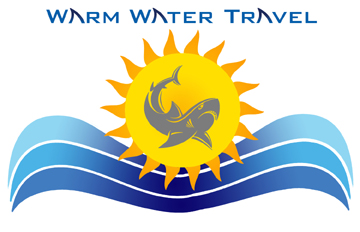Scotland is where rugged coastlines meet mist-covered mountains, and ancient legends whisper through the windswept landscapes. Nestled in the rough waters of the North Atlantic and North Sea, the islands of Scotland are scattered jewels that invite explorers to immerse themselves in a world of rugged charm and rich history. Each island has its own unique story to tell, from the mysterious standing stones of the Orkney Islands to the dramatic cliffs of the Isle of Skye.
-
 Lewis and HarrisSee More
Lewis and HarrisSee MoreLewis and Harris
Lewis and Harris, which is the largest island in Scotland and the third largest in the British Isles with an area of approximately 2,179 square kilometers. Despite being the same island, historically, the island’s northern part is Lewis and southern part Harris. Lewis is flat, with some stony ridges and rising to 623 meters. Harris is mountainous, with the highest peak named Clisham, which reaches up to 799 meters. The economy of the island is primarily dependent on tourism, fishing, and crofting.
-
 SkyeSee More
SkyeSee MoreSkye
Skye is the second-largest island in Scotland, measuring approximately 1,656 square kilometers in size. It is in the northwest of the country and has a population of around 10,000. Skye is known for its rolling hills, clear lakes, and stunning landscapes, with popular sights including the Old Man of Storr, the fairy pools, and the Quiraing. The economy of the island depends mainly on tourism, crofting, farming, and fishing.
-
 MullSee More
MullSee MoreMull
With an area of approximately 875 square kilometers, the Hebridean island of Mull is the third-largest island in Scotland. It is in the Inner Hebrides and is home to a population of approximately 2,800 people. Mull is mainly known for its diverse landscapes, including wildlife, beautiful beaches, and rugged mountains. The island’s principal industries are crofting, forestry, fishing, and tourism.
-
 JuraSee More
JuraSee MoreJura
Jura, located in the Inner Hebrides and measuring around 367 square kilometers, is the fourth-largest island in Scotland. It is renowned for its rugged and mountainous landscape, with the “Paps of Jura” being one of the most famous landmarks. The island is home to less than 250 people, and the economy is mainly based on farming, fishing, and deer-stalking.
-
 IslaySee More
IslaySee MoreIslay
Islay, has an area of around 619 square kilometers and is located off the west coast of the Scotland.. The island is known for its rugged coastline, beautiful beaches, and ancient remains of standing stones and forts. The economy of Islay is centered around renewable energy, agriculture (cattle farming), whisky distillation, and tourism.
-
 ArranSee More
ArranSee MoreArran
Arran, located in the Firth of Clyde, is approximately 432 square kilometers in size. The island is famous for its wildlife, stunning walks, and outdoor activities, including cycling, rock climbing, and golfing. The island’s economy is centered on tourism, fishing, forestry, and farming.
-
 South RonaldsaySee More
South RonaldsaySee MoreSouth Ronaldsay
South Ronaldsay, located in the Orkney Islands, is around 48 square kilometers in size,. The island is famous for its standing stones, including the famous Tomb of the Eagles and the unique St. Margaret’s Hope. The island’s economy is reliant on fishing, farming, and tourism.
-
 BenbeculaSee More
BenbeculaSee MoreBenbecula
Benbecula, with an area of around 82 square kilometers, is the ninth-largest island in Scotland and located in the Outer Hebrides. It forms part of the Uist islands chain and hosts a population of approximately 1,300. The island’s economy is dependent on crofting, fishing, and tourism.
-
 BarraSee More
BarraSee MoreBarra
Located in the Outer Hebrides, Barra is one of Scotland’s smallest inhabited islands, with an area of approximately 61 square kilometers. Despite its small size, the island is rich in history, culture, and traditions, including the unique experience of landing on its Cockle Strand runway — the only tidal powered airport in the world. The economy of Barra is based on crofting, fishing, and tourism.
-
 ShetlandSee More
ShetlandSee MoreShetland
The islands of Shetland offer a landscape that feels like a world of its own. Majestic cliffs give way to sweeping moors and tranquil beaches, while vibrant wildflowers dot the countryside with bursts of color. Located around 100 miles northeast of the Scottish mainland, Shetland is an archipelago of around 100 islands, each with its unique character. Traditional industries such as fishing and agriculture still play a significant role, but Shetland has also embraced sectors like renewable energy, tourism, and the arts.
-
 OrkneySee More
OrkneySee MoreOrkney
The islands of Orkney feature rolling green hills, pristine sandy beaches, and ancient standing stones that create a tapestry of unique charm. The isles are known for their remarkable archaeological sites, including the UNESCO World Heritage Site of Skara Brae, showcasing the island’s rich Neolithic history. While agriculture and fishing have long been the backbone of Orkney’s economy, the island has embraced renewable energy, particularly wind power.











